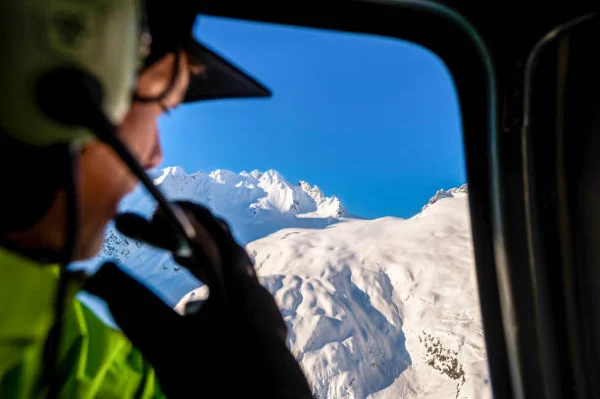Winter’s Aerial Splendor
A Ground Perspective: The Coziness of Winter
Winter brings to mind images of families gathered around fireplaces, children joyfully building snowmen, and the comforting aroma of freshly baked cookies wafting through homes. Streets are adorned with festive decorations, and cheerful laughter resonates in the chilly air. It’s a season of celebration, reflection, and the warmth of togetherness.
The Skyward Call: Aviation’s Winter Canvas
For those passionate about aviation, winter unfolds as a mesmerizing canvas. The skies beckon with the allure of unparalleled beauty. Flying small planes during this season isn’t just about reaching a destination; it’s an expedition into a world transformed by nature’s icy touch.
Nature’s Majestic Display: The Frozen Beauty Below
Soar above forests where trees shimmer with sparkling frost, rivers that have transformed into gleaming silver threads, and cities blanketed in a serene white. Mountains, typically rugged, now gleamed with snowy crowns, standing tall against the azure winter sky. Frozen lakes capture tales of past seasons, presenting a spectacle of tranquility and timelessness.
The Pilot’s Winter Journey: Challenges and Rewards
For pilots, winter flying offers a dual thrill. There’s the technical challenge of navigating colder weather, ensuring every safety protocol is adhered to, and mastering the intricacies of winter aviation. Simultaneously, there’s the unparalleled joy of witnessing a world transformed, feeling the crisp winter air, and being in harmony with the vast winter sky.
As aviators ascend into this winter wonderland, it’s essential to delve deeper into the intricacies of flying during winter weather, understanding its challenges, and harnessing its rewards. Let’s venture into the realm of winter aviation, where every flight is a dance with nature’s frosty elements.
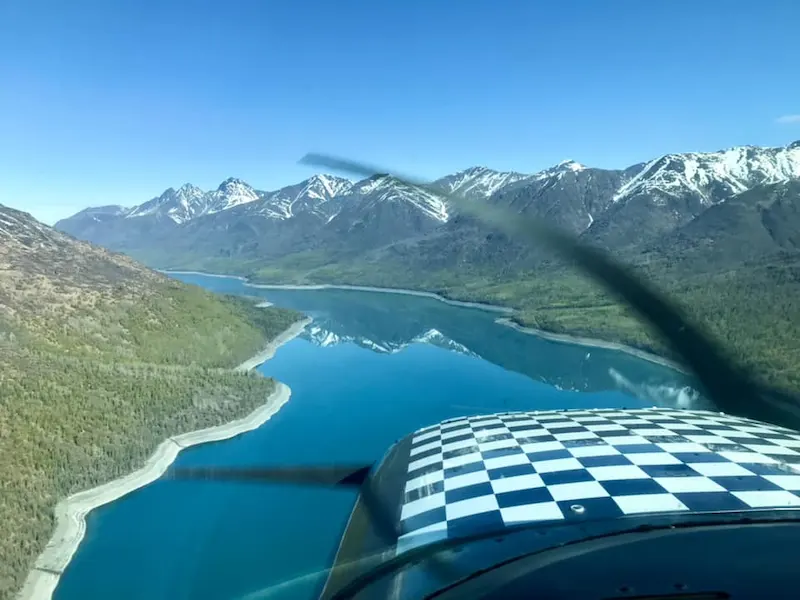
The Mystique of Winter Flying
A Seasonal Shift: More than Just Cold Air
Winter flying is not just a transition from warm to cold. It’s a shift in the entire flying experience, bringing with it new nuances that demand a pilot’s attention and respect.
Challenges in the Chills
The cold weather is not just a drop in the thermometer; it presents aviation obstacles that test a pilot’s skills and knowledge. From icy runways to changes in air density, winter introduces a set of challenges unique to the season.
Beauty Amidst the Brrr
Despite its challenges, winter flying unveils an unparalleled beauty. The world below transforms into a serene white landscape, and the skies offer a clarity rarely seen in warmer months. This juxtaposition of challenge and beauty makes winter flights genuinely adventurous.
As we delve deeper into the world of winter aviation, let’s explore how pilots navigate these challenges and savor the breathtaking beauty of the season.
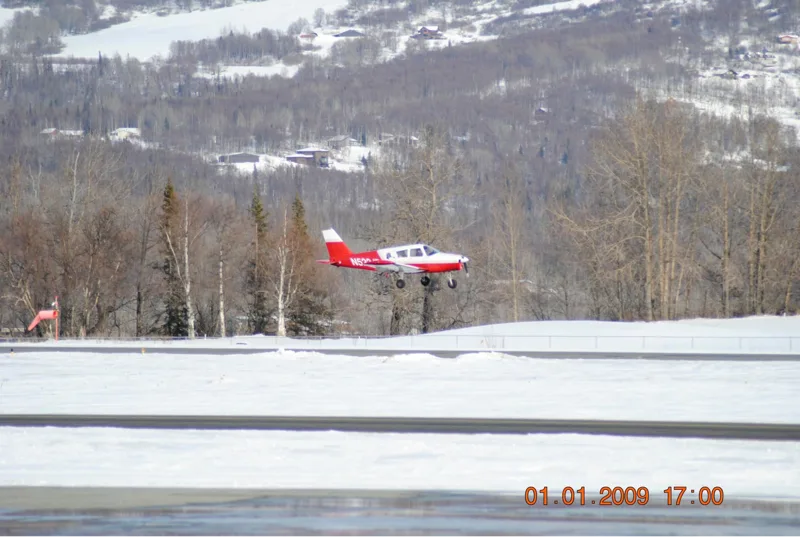
Wonders Viewed from Above
From the cockpit, winter is a spectacle. Flying over frozen water bodies, navigating through snow flurries, and observing the world blanketed in a white sheen offers an unparalleled experience.
Cold Weather Operations: Ensuring Safe Skies
The Winter Sky: Not Just Another Season
Flying in winter is about more than just handling the cold. The season introduces many factors that can significantly influence flight operations, from the ground up to cruising altitudes.
Mastering the Elements: A Pilot’s Winter Handbook
To safely navigate these challenges, pilots must be adept at cold weather operations. This includes understanding the effects of icy runways, managing the risks of frost on the wings, and recognizing the changes in aircraft performance due to the denser cold air.
Safety Protocols and Checklists
Being proactive is crucial. Regular checks, pre-flight inspections, and adhering to updated protocols can make all the difference. Cold weather demands more rigorous inspections, ensuring all aircraft systems, from engines to electronics, function optimally in freezing conditions.
Embracing the Challenges: The Reward of Winter Flights
While cold weather operations might seem daunting, they offer pilots the opportunity to hone their skills, adapt to diverse conditions, and experience the sheer beauty of winter landscapes from above.
As we journey further into the realm of winter aviation, we’ll delve into the specifics of ensuring safe and memorable flights during the chilliest months of the year.
Let’s Get Technical: Air and Engine Combustion in Cold Weather
Exploring the Science of De-Icing
Winter flights often present the picturesque beauty of snow-covered landscapes, but they also bring a crucial component to flight preparation: de-icing. The sparkling frost and snowflakes, while beautiful, are not a pilot’s best friend.
De-icing ensures that ice and snow don’t compromise an airplane’s aerodynamics. The process involves spraying a specially formulated antifreeze fluid on the aircraft’s surfaces. It’s a short-term solution primarily aimed at melting any existing ice and preventing new formation, especially in extreme icing conditions.
Expert Insight: “De-icing is not just a process; it’s a necessity. Ensuring our aircraft is free from ice is paramount for a safe flight,” remarks Captain James Lowell, a seasoned pilot with over 20 years of flying experience.
For instance, in December 2020, Flight AA1234 from Chicago to Denver was delayed by 45 minutes due to de-icing. Though passengers were anxious to take off, the delay ensured a safe and turbulence-free journey amidst the snow-clad Rockies.
Remember, while planes are designed to handle cold weather and snowy conditions, de-icing can add extra minutes or even hours to the pre-flight process. But these moments are investments in safety.
Understanding the Impact of Cold on Mechanical Interfaces
The beauty of winter from above is unmatched, but down on the ground, the cold temperatures present challenges for the mechanical components of planes.
Transitioning from a cozy, pre-heated hangar to the frosty outdoors can strain the airplane’s airframe, heaters, and other components. Fluids like oil and fuel may move sluggishly or even freeze, posing operational challenges.
The engine, the heart of the aircraft, needs special attention. In freezing temperatures, the efficiency of the engine’s combustion can be reduced. This highlights the importance of a thorough warm-up using tools like the Red Dragon blast heater.
Visual Guide: Consider checking out a winterization kit here to familiarize yourself with its components. Additionally, this GIF shows the engine pre-heating process in action.
Metal parts can become brittle in cold conditions, which is particularly concerning for older aircraft or those stored without climate control. Therefore, using accessories like an insulated engine cover becomes crucial.
Being a winter pilot means juggling the season’s beauty with its challenges. But with the proper knowledge and tools, every flight can be safe and mesmerizing.
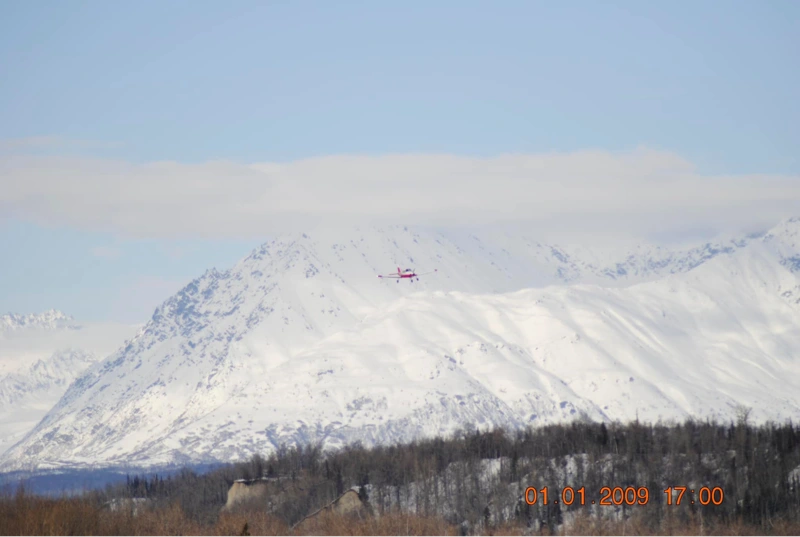
The Dynamics of Cold Air: Implications for Winter Flying
Understanding the dynamics of cold air is crucial for winter flying. Contrary to popular belief, cold air can actually be an ally in aviation, particularly for small airplanes. Its increased density compared to warm air brings several benefits, including better lift and more efficient take-offs.
The Physics of Cold Air:
The laws of thermal dynamics state that cold air sinks while heat travels upward. This is because cold air is denser than warmer air. When air molecules are cooled, they move slower and cluster closer together, resulting in higher air pressure or density.
Cold Air and Aviation:
In aviation, the density of the air plays a significant role in aircraft performance. An aircraft generates lift through its wings; the denser the air, the more air molecules to “push” against the wing’s bottom surface, creating greater lift. This is why airplanes can take off and climb more efficiently in colder conditions.
Power Performance in Cold Air:
Furthermore, cold air can enhance the performance of aircraft engines. Engines work by drawing in air and mixing it with fuel. Since cold air is denser, more oxygen is drawn into the combustion chamber, allowing the engine to burn more fuel and produce more power.
Cold Air: An Unlikely Ally:
So, while cold air might require pilots to factor in considerations such as icing and the need for engine preheating, it can also offer performance advantages. Efficient take-offs, powerful performance, and even potentially shorter flights (due to less time needed to climb to cruising altitude) can all result from the dynamics of cold air.
In summary, the dynamics of cold air significantly influence winter flying. While it presents challenges, understanding and harnessing these dynamics can enhance aircraft performance, especially for small airplanes.

Plane Preparations: Key Steps for Winter Flying
Winter flying presents unique challenges, and proper preparation is crucial to ensure safety and optimal performance. Here are some critical steps to prepare your airplane for winter flights:
Engine Warm-Up:
Cold engines can be finicky, and warming them up properly is critical for optimal engine performance. According to Pilot Workshop, in most situations, by the time the run-up is complete, the cylinder head temperature is OK for takeoff. Preheating an airplane engine can prevent premature wear and tear, enable smoother starts, reduce run-up time, and ensure proper oil circulation.
Moreover, a preheater installed on the engines can eliminate issues with cold engine starts and excessive wear and tear.
Tackling Ice Accumulation:
Winter means potential ice accumulation on aircraft surfaces. A thorough check and removal process is essential to ensure the aircraft’s aerodynamics aren’t compromised. This involves inspecting the wings, tail, and other surfaces for ice or snow before takeoff.
De-Icing:
More than just a precaution, de-icing is vital for safety. It involves removing ice or snow that has already formed on the aircraft and applying anti-icing fluid to prevent further accumulation. De-icing ensures your airplane’s ability to fly isn’t compromised by changes in weight or airflow caused by ice accumulation.
Properly preparing your airplane for winter conditions can make all the difference in ensuring safe and efficient winter flights. Remember, taking the time to prepare can save you much more time – and risk – in the air.

Weather Watch: Being Winter Wise
Winter weather isn’t just about snowflakes and chilly breezes. It encompasses everything from freezing rain and freezing drizzle to sudden temperature drops. Staying updated with reliable aviation weather forecasts is paramount.
Airport Chronicles: Winter Edition
Winter brings about a change in airport operations. Snow clearance, managing icy conditions, and ensuring safe take-off and landing are part and parcel of winter airport management.
Safety Protocols for Cold Weather Flying
Safety in aviation is paramount, and in winter, certain specific precautions become even more critical. Here are some essential safety protocols for cold-weather flying:
In-depth Pre-flight Inspection:
Before takeoff, an in-depth pre-flight inspection is crucial. This involves checking everything from the oil temperature to ensuring devices like carb heat are operational. Check the oil to ensure it’s at the correct level and warmed up sufficiently. The carburetor heat should be checked to ensure it’s working as expected because a frozen carburetor can lead to engine failure. Remember to check for ice or snow accumulation on the wings, tail, and other surfaces of the aircraft.
On-the-Go Checks:
Once in the air, continuous monitoring of weather conditions is crucial. Winter weather can change rapidly, and pilots must be prepared to adapt. Pay close attention to temperature changes and visibility. If you’re flying in known icing conditions, be extra vigilant. Monitor your aircraft’s performance and be prepared to change altitude or divert to an alternate airport if necessary.
Emergency Equipment:
Ensure you have all necessary emergency equipment onboard, including survival gear suitable for winter conditions. This could include blankets, warm clothing, high-energy food, and a first-aid kit.
Training and Preparation:
Lastly, proper training and preparation can’t be overstated. Familiarize yourself with your aircraft’s particular responses to winter conditions. Understand how to use de-icing and anti-icing systems effectively. Ensure you know what to do if you encounter icing conditions unexpectedly.
Remember, safety isn’t just about responding to issues but proactively preventing them. With thorough preparation and a focus on safety, winter flying can be a rewarding experience.

Navigating in Winter: A Guide for Pilots
Winter flying poses unique challenges due to potentially reduced visibility caused by snow, fog, and shorter daylight hours. Here’s how advanced technology and traditional techniques can assist pilots with navigation during the winter months:
Pre-Flight Weather Briefing:
Before taking off, a comprehensive weather briefing is essential. This provides crucial information about current and forecasted weather conditions, helping you plan your flight path accordingly.
Utilizing Avionic Systems:
Modern aircraft have sophisticated avionic systems, including GPS and terrain awareness and warning systems (TAWS), which are invaluable in low visibility conditions. These systems provide real-time information about the aircraft’s position and potential hazards on the flight path.
Traditional Navigation Skills:
Despite the sophistication of modern avionics, fundamental navigation skills remain critical. Proficiency in reading aeronautical charts and understanding visual navigation techniques can be lifesaving if digital systems fail.
Use of Autopilot:
Autopilot systems can be particularly helpful in maintaining control and reducing workload in challenging weather conditions. However, it’s crucial to understand the capabilities and limitations of your airplane’s autopilot system before relying on it in adverse conditions.
ATC Assistance:
In low visibility conditions, air traffic control (ATC) can provide radar vectors to help navigate around storm cells or guide you to your destination.
Training and Preparation:
Lastly, training and preparation are essential. Pilots should familiarize themselves with different navigation aids and practice using them in various conditions. Simulated instrument flight training can be especially valuable for preparing to fly in low-visibility situations.
Remember, navigating in winter requires both leveraging technology and honing traditional skills. No matter the season, safety in aviation always starts with thorough preparation and planning.
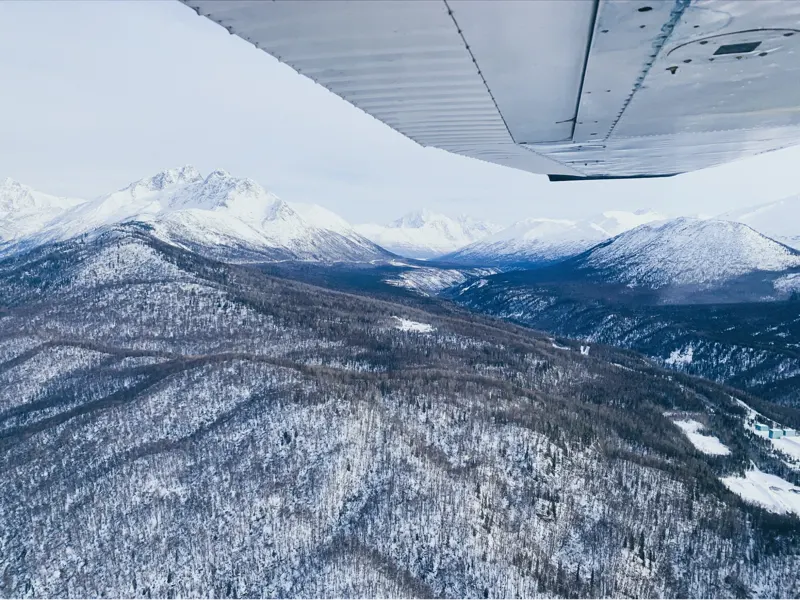
FAQ Corner: All About Winter Flying
Navigating the winter skies brings its set of questions. Here, we address some of the most common queries about winter flying, clarifying and dispelling myths.
Is flying small planes in winter safe?
Absolutely! Flying small planes in winter is not only safe but can be an exhilarating experience. With the proper precautions, equipment, and adherence to cold weather operations, pilots can enjoy the beauty of winter from above with confidence.
How do cold temperatures impact flying?
Cold temperatures introduce a range of factors that can influence flying. The denseness of cold air, for instance, can affect engine operations, air density, and more. Being knowledgeable and prepared to adapt to these changes is crucial for winter flights.
What’s the deal with ice and snow?
Snow and ice, while picturesque, can pose challenges to flight dynamics. They can accumulate on aircraft surfaces, affecting aerodynamics. Therefore, proper de-icing and preventive measures are vital to ensure safe and smooth flights during the snowy months.
Conclusion: Celebrating Winter in the Air
Winter flying is more than just a seasonal activity; it’s an experience, a challenge, and a joy. Embrace the cold, prepare well, and let the skies be your playground this winter. Safe travels!
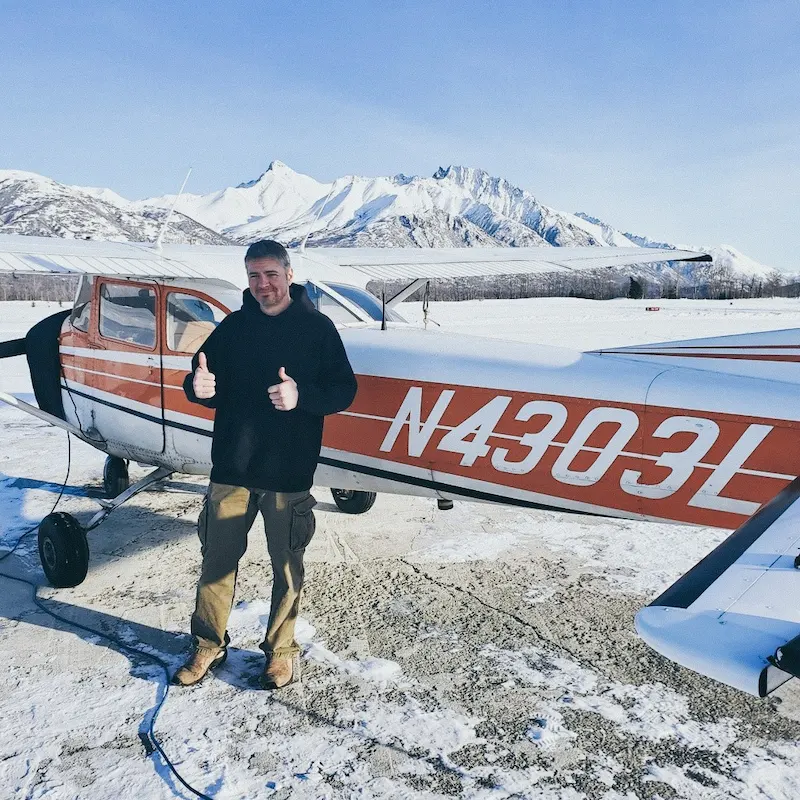
Take Flight with Fly Around Alaska Flight Training
Ready to take your winter flying to the next level? Fly Around Alaska Flight Training offers a range of programs tailored to suit your aviation needs. Whether you’re aiming for the Accelerated Private Pilot Program, the Guaranteed Private Pilot Program, or seeking to enhance your skills with the Multi-Engine Add-On Rating, we have you covered.
If flexibility is what you’re after, the Pay As You Go Private Pilot program might be your best bet. For those looking to master instruments, the Accelerated Instrument Program and the Guaranteed Instrument Rating await.
Embark on your next aviation adventure with the best in the business. Sign up today and soar higher with Fly Around Alaska Flight Training! Fill out the form below for more information.
